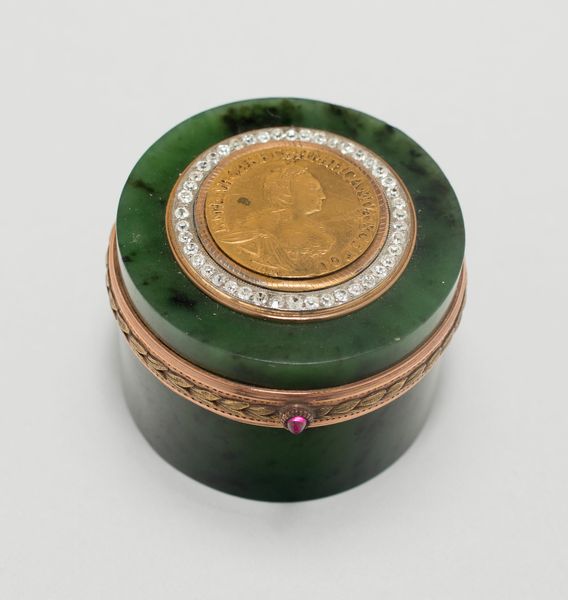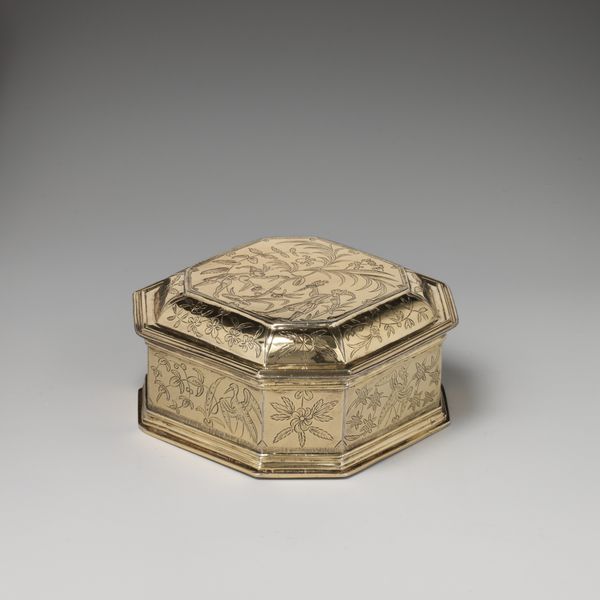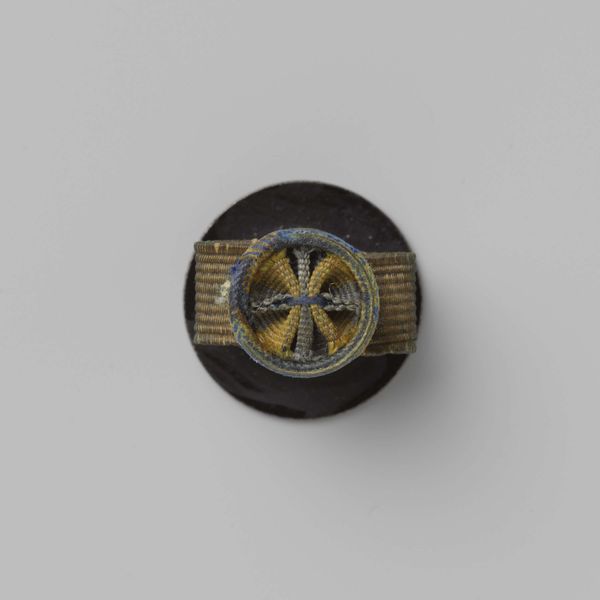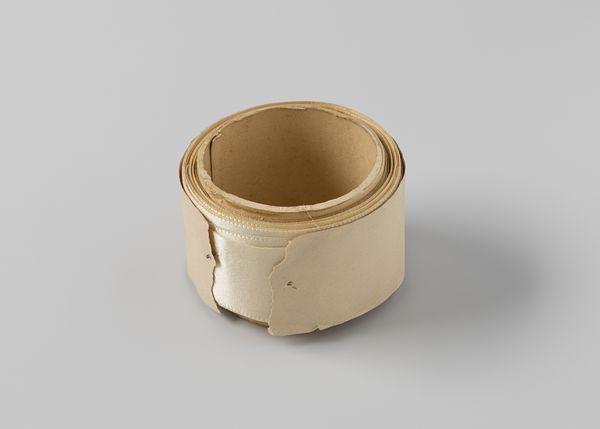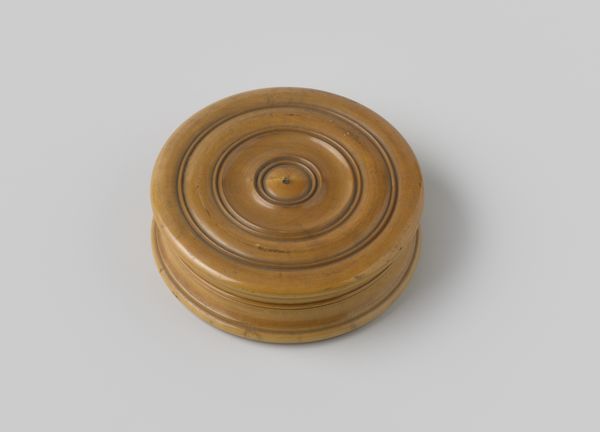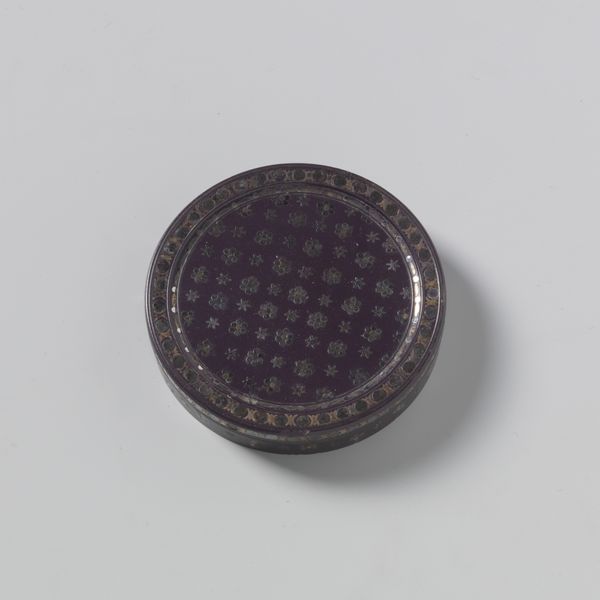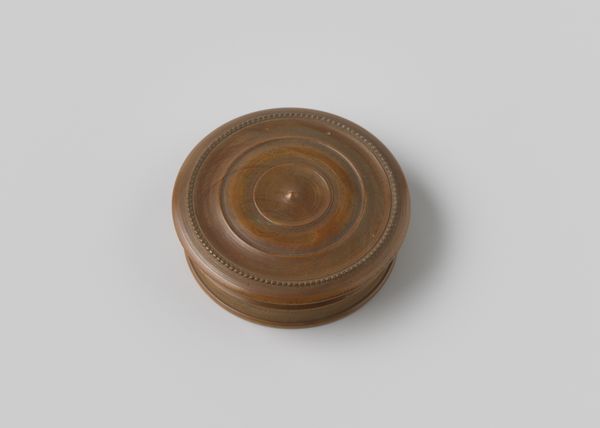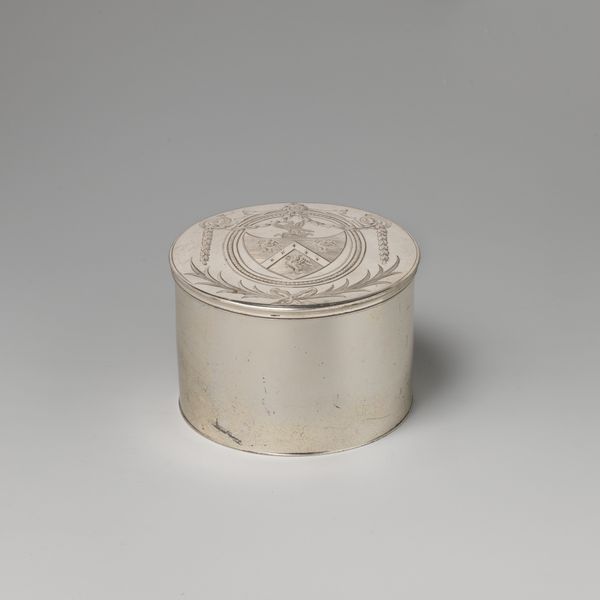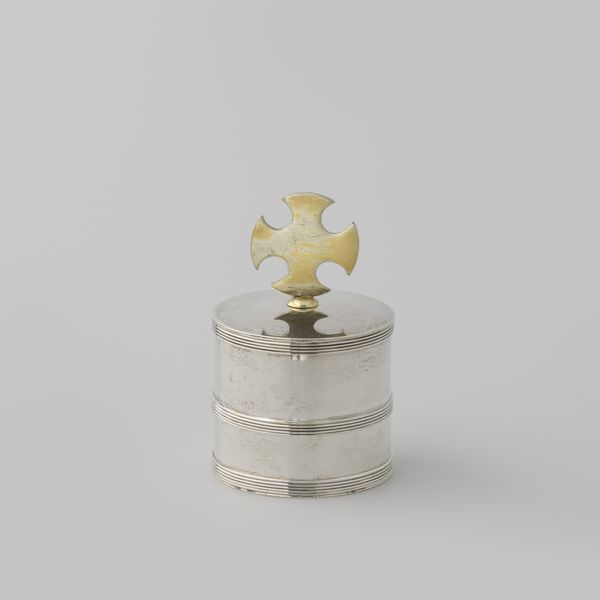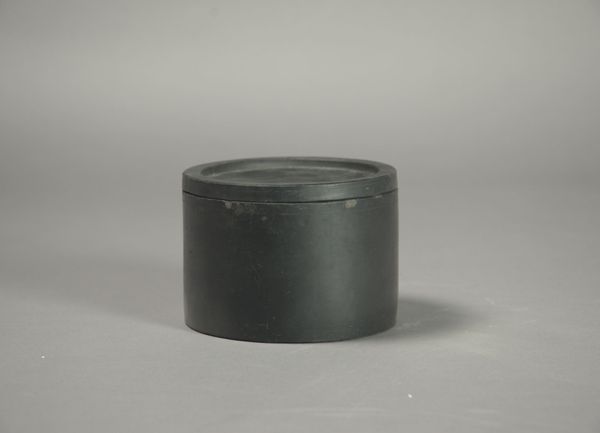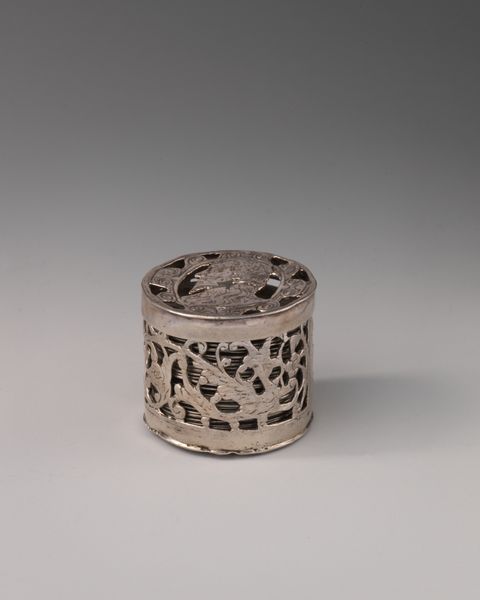
Dimensions: 1 1/4 × 2 7/8 in. (3.2 × 7.3 cm)
Copyright: Public Domain
Editor: So, this is Charles Le Bastier's "Snuffbox," made around 1773 or 1774. It's a metal sculpture, housed at The Met. I am drawn to its detailed surface... the lines and ridges around the lid. What story do the materials tell us about its production and use? Curator: Well, consider what it takes to produce such a refined object. The labor involved in sourcing the metal, the specialized skills needed for its fabrication, and the artistry in the enameling – all of this points to a highly stratified society. Snuff, initially seen as medicine from the New World, was becoming increasingly popular amongst the elite in Europe, resulting in specialized trades catering to an economy of leisure. Who do you imagine might have owned this object? Editor: Someone with access to luxury goods. But knowing that it's a snuffbox... Does its purpose change how we view its value? Is it merely decorative, or something more? Curator: The ritual of taking snuff, especially within certain social circles, became a performance. These boxes, then, are more than just functional objects; they are performative objects. The choice of materials – perhaps gold accents, the meticulous design - became signifiers of status and taste. It's not just about consumption, but about the display of consumption. Does the level of craftsmanship change how you feel about this class display? Editor: It does. Thinking about the time and skill poured into this, almost fetishizing its materials, highlights that disparity, doesn't it? Curator: Precisely. The Snuffbox represents a fusion of material culture and societal hierarchies. Editor: I'll never look at decorative art the same way again. Thanks for pointing out those material connections!
Comments
No comments
Be the first to comment and join the conversation on the ultimate creative platform.

